Bruges on a Bicycle
Our ferry to Dunkirk was booked for 6am Friday morning which meant an entirely unreasonable alarm call of 1.45am in order to get to the port on time. After packing the car and attaching our bikes to the rack we were off to Dover and making good time. We had a long day of cycling planned after alighting in France hence the early morning ferry crossing.
Four of us had planned a short cycling break with the aim of visiting the medieval city of Bruges in Belgium. We had intended a long day in the saddle as we were going to stop off at the historic town of Ypres before making our way to our accommodation in Bruges. The total route there should have amounted to around 75 miles which meant we could make it to our destination with plenty of time to spare before the sun dipped below the horizon and the night chill set in. A more direct route to the return ferry was planned for the Sunday.
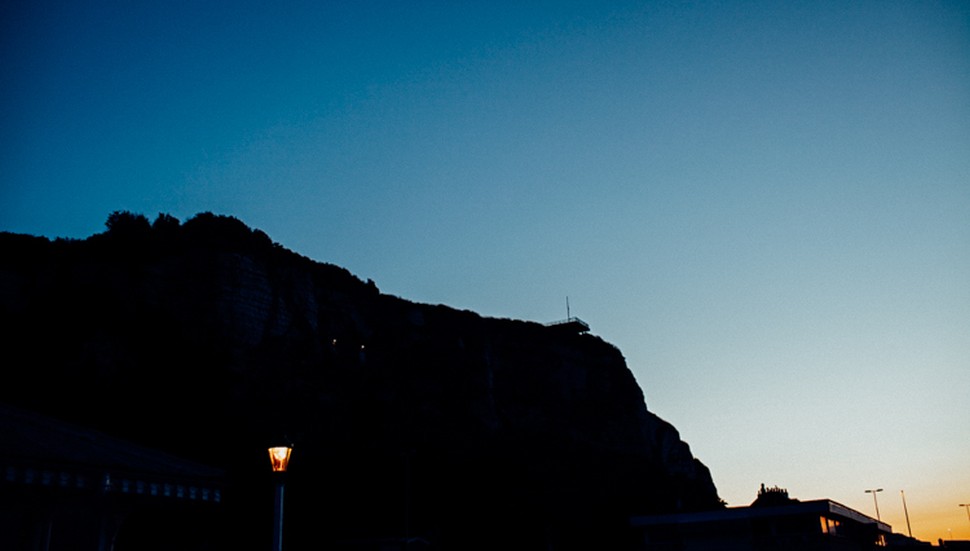
The eventual beginning
After a good half hour of attempting to exit the port (which was surprisingly difficult on a bicycle) we were able to get on to the open road by 11am. Our group of four headed off following a pre-planned route on a GPS cycle computer. The route looked quite simple, however, when planning it I was unaware that there are two Dunkirk passenger ferry ports and my recorded route began at the port situated 12 miles up the road! This was going to add more miles and another hour on to our journey, but we all remained upbeat about the day. Our positive disposition was in part due to the excellent cycling weather we were enjoying. I was particularly concerned that the weather in northern France and Belgium would likely be on the grim side, with rain and high winds not out of the ordinary. Not today though, layers were already coming off as the rays of sunshine were beating down on us!
Once past the eerily quiet industrial area littered with oil refineries served by the various freight ports we entered the Dunkirk at the beginning of the planned route. This Dunkirk was something unexpected as it was clearly the beach resort that the French enjoyed to relax in. The miles of sandy beaches and wide promenade were buzzing with local holidaymakers. We soon headed inland and away from the hoards towards the serene and very quiet countryside. The small roads were lined with miles upon miles of farmland with cows dotted around and the odd chateau here and there. An occasional car engine was the only noise that punctuated the sound of our wheels and conversation. We were enjoying the fine roads and the lack of hedgerows that usually obscure the view when riding on UK roads. And we were to have this all the way to Ypres.
The edge of Belgium
Shuttered windows on the houses, French registered cars and Gallic sounding town names on road signs all gave clues as to our whereabouts. But gradually there looked to be a change of scenery with the houses looking extraordinarily clean and new, all the fields full of vegetables and the road signs containing an ever-increasing number of vowels. This had to be Flanders country! The border crossing was wholly unremarkable and would have been missed if we weren't looking for it. However, we were pleased to have made it to our third country before lunch on a bicycle.
Ypres, a living reminder of the past
After cycling past field after field of sweet corn, onion, carrot, leeks, beetroot, sugar beet, potatoes and, of course, Brussels sprouts we made it to Ypres. The town contains a beautiful array of architecture but it has a very troubled past stemming from the major conflicts it experienced during the First World War. Ypres was at the centre of allied-held land and was surrounded on three sides by the Germans. Situated in an unfortunate geographic position it prevented the Germans from securing control of the Channel ports and as a consequence the town suffered from German bombardment throughout the war. Renovation commenced after the war in order to restore the buildings to their previous glory. The most striking image as you enter Ypres will be the large market square and adjacent gothic cloth hall majestically overlooking the crowds below. Either by design or by default Ypres has an unsettling feel as reminders of the past atrocities are common and prominent.
Unfortunately we were running quite late and we did not have the time to explore the illustrious town. So we grabbed a completely un-Belgian late lunch of Paninis and lasagne then headed out for the second leg of the day. A bit more of a hold up came via a closed road cycle race through the centre of Ypres. The group of 20 or so shaved-leg racers put our average speed to shame but gave us a little more encouragement to keep going.
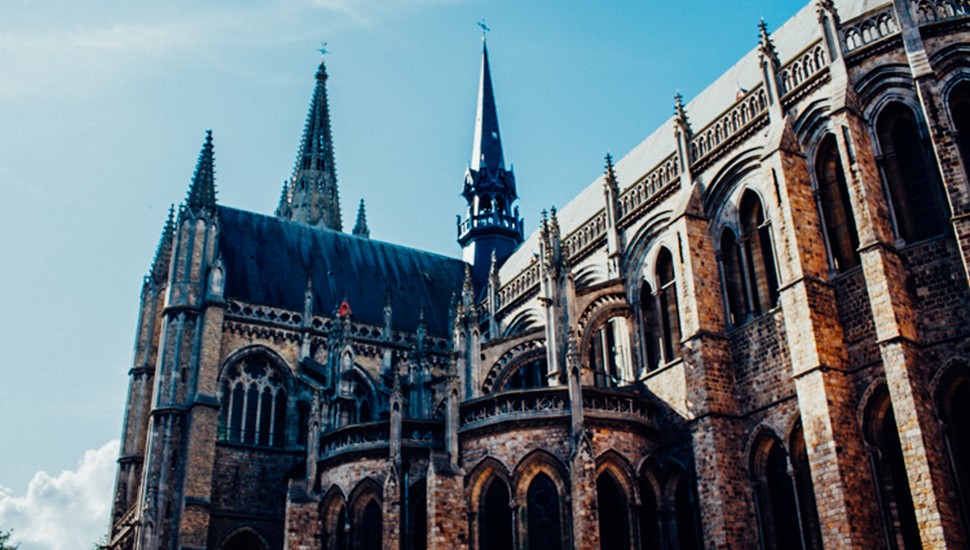
Arrival by pedal power
We had around thirty more miles to get to Bruges and our legs were thankful for the lack of altitude Belgium posses. After passing more fields bulging with various vegetables we eventually found ourselves on the outskirts of Bruges as the sun was dipping closer to the horizon. Navigating around the city's ring road and past the ancient city gates was made very simple by the excellent cycle lanes that are present everywhere in Belgium. Belgium's cycling culture makes riding a bicycle in the country a joy as car drivers, pedestrians and cyclists are all aware of each other significantly reducing the danger for all parties.
After 87 miles, 7 hours in the saddle and over 8 hours on the road in total we met Ana, the owner of the house we rented through Air BnB. She showed us around our spacious accommodation In English that was far superior to my Flemish and then left us to it. The lack of sleep and exertion of the day was taking its toll, so after grabbing some sustenance and a shower we headed off to bed for a good night's sleep ready to explore Bruges the next day.
A wander through Bruges
We had no real plan to our exploration so we just set off on-foot to meander around the idyllic streets and take in the old-world charm the city has to offer. After getting our fix of the famous Belgian waffles we wandered around the narrow canals gazing at the gothic architecture and tried to avoid the horse-drawn carriages transporting tourists from attraction to attraction. The main market square, Markt, is a beautiful area with picturesque medieval buildings on each side - every one of them appearing to contain a different museum. The main spectacle of the square has to be the 83 meter high Belfort which dates back to the 13th century (one of only a few buildings that hasn't been reconstructed during the 19th century). The 47-bell carillon inside the Belfry seemed to chime throughout our stay impressing all that could hear them.
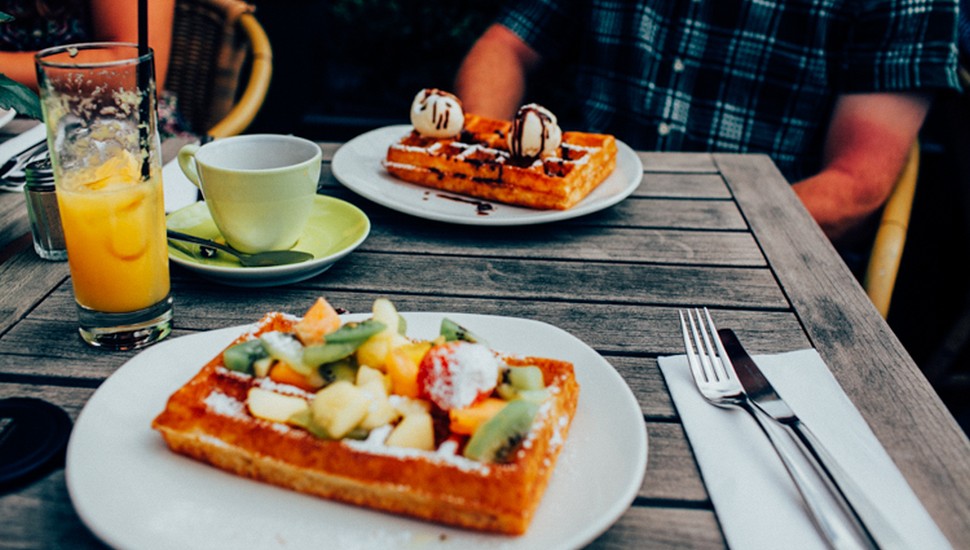
As the temperature hit an unseasonal 30 degrees Celsius we decided to take a break from the tourist scrum. Heading off to the nearby, but very quiet, Minnewater lake park and taking with us a couple of the more obscure Belgium beers, we relaxed in the tranquillity of the shaded park while looking up at the prodigious Church Of Our Lady.
We decided to return to the centre for dinner later in the evening, when the crowds had died down and when the already photogenic streets became even prettier under the street lights. It was getting quite late when we found a place to eat, however, the venue didn't disappoint. We enjoyed a meal of mussels and traditional Flemish stew - just to make sure the waitress knew we were tourists! It was all cooked perfectly and washed down with Brugse Zot, the local beer. None of us could remember the name of the restaurant, most probably due to the numerous other eateries we passed on the way rather than the strength of the regional brew.
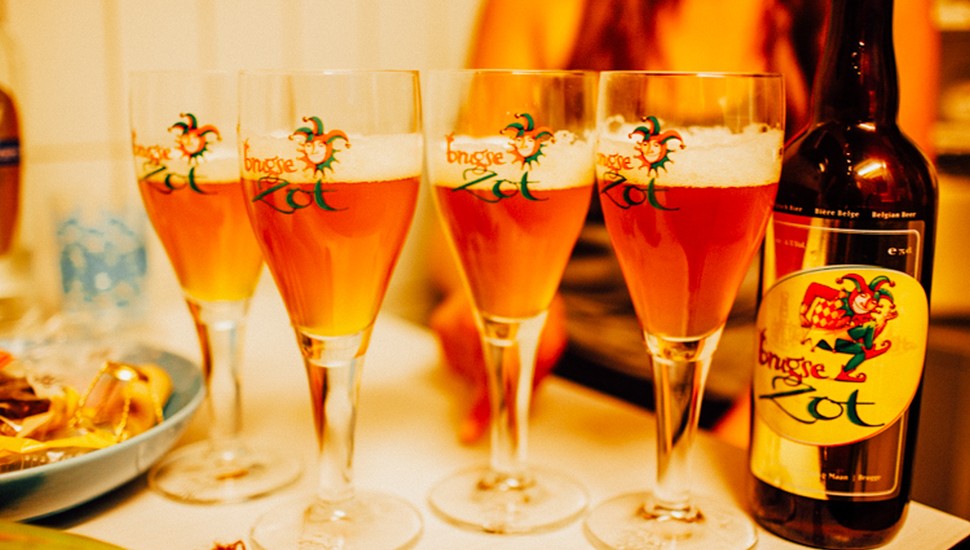
On our way back to the house we got the rain that the heat wave had been promising. The downpour was one of the heaviest I've ever witnessed and the accompanying lightening was incredible. The night sky illuminated with brilliant white flashes every few seconds for hours all the way through the night. The noise combined with tackling the leaking roof did not make for a peaceful night's sleep.
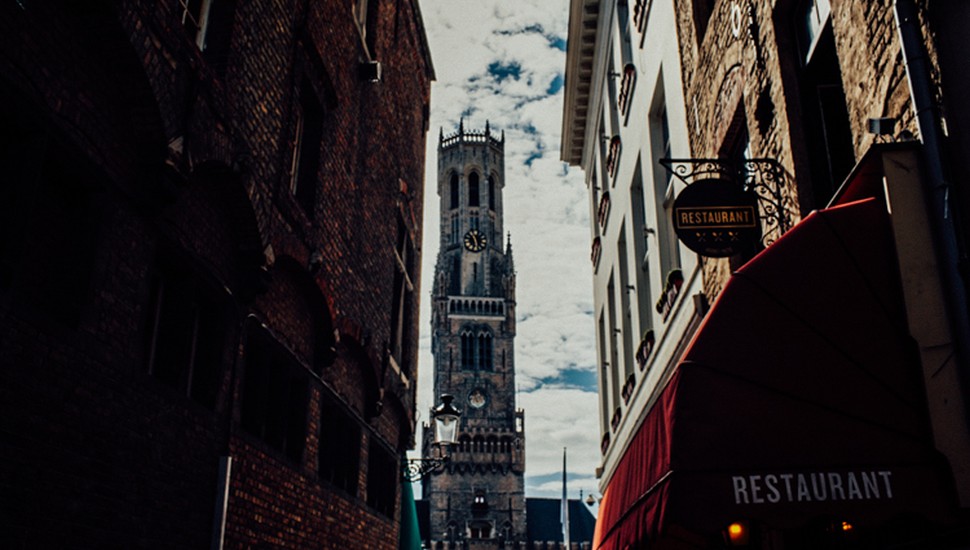
The return
The aftermath of the storm left the once spotlessly clean roads littered with debris from the trees, but the humidity in the air was still as stifling as the day before. After a pastry or two from a friendly bakery close by we were ready to make the 58 mile journey back to Dunkirk. The correct Dunkirk this time! The ride back to the ferry was somewhat unexciting but peaceful. The vast majority of the journey took place on roads adjacent to one of the wide canals that make up the network of Belgium, only occasionally veering off to join the canal at a different place. The route was relaxed and very cycle friendly with few cars to avoid and towns to navigate through. Together we weaved our way through retirees pootling along on their rusty old bikes and speed demons perched on expensive carbon machines weaving their way past us. We skirted around the industrial Oostende and looked over at the high rises stretched across Nieuwpoort before taking in the picturesque Veurne. The wind was with us so we made good time back to Dunkirk and ready for our 6pm ferry back to the white cliffs of Dover, where we were sure to experience some actual Belgian weather.
Belgium is a perfect place to experience a relaxed cycling holiday, the car drivers are respectful, there's an excellent network of cycle lanes and the roads are very well maintained. The picture postcard towns of Ypres and Bruges with striking architecture are well worth a visit and easy to get to. Not to mention the post-ride refuelling opportunities of world famous beer and frites!
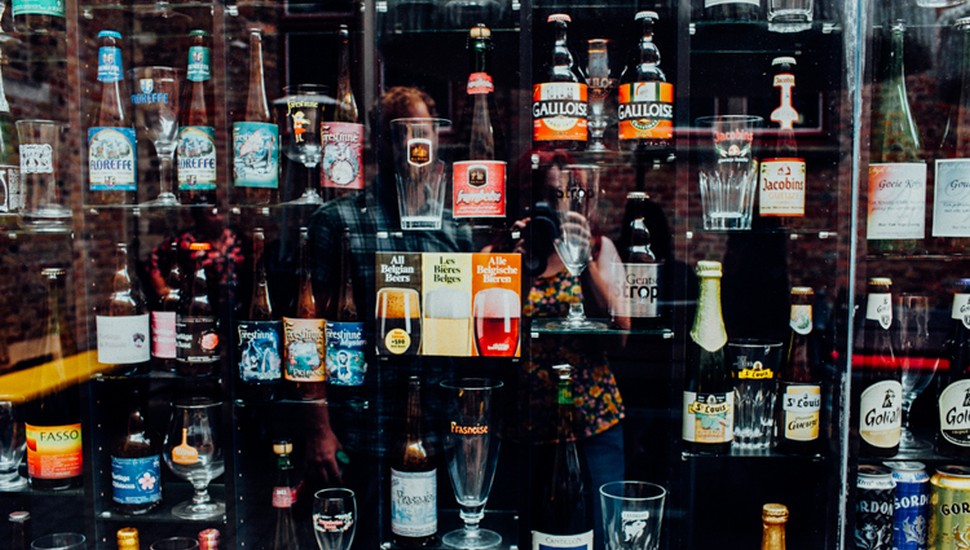
Our modest peloton was lucky enough to have the talented photographer, Rosie Cooper, in its grasp, who provided us with an excellent visual documentation of the trip (included in this write up). Be sure to visit her website for more of her work www.rxcrose.com.
Get a Quote